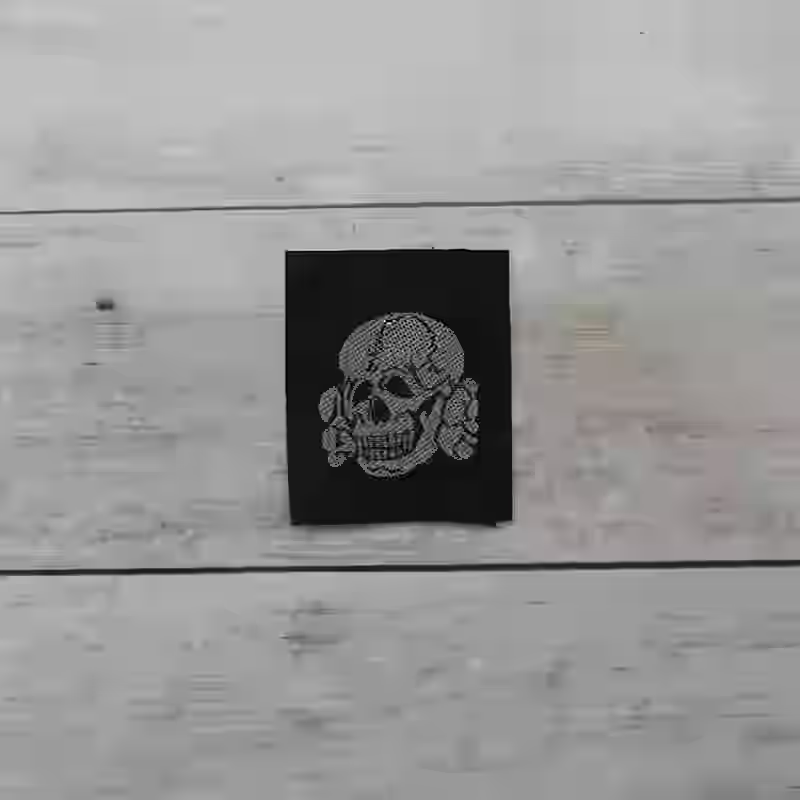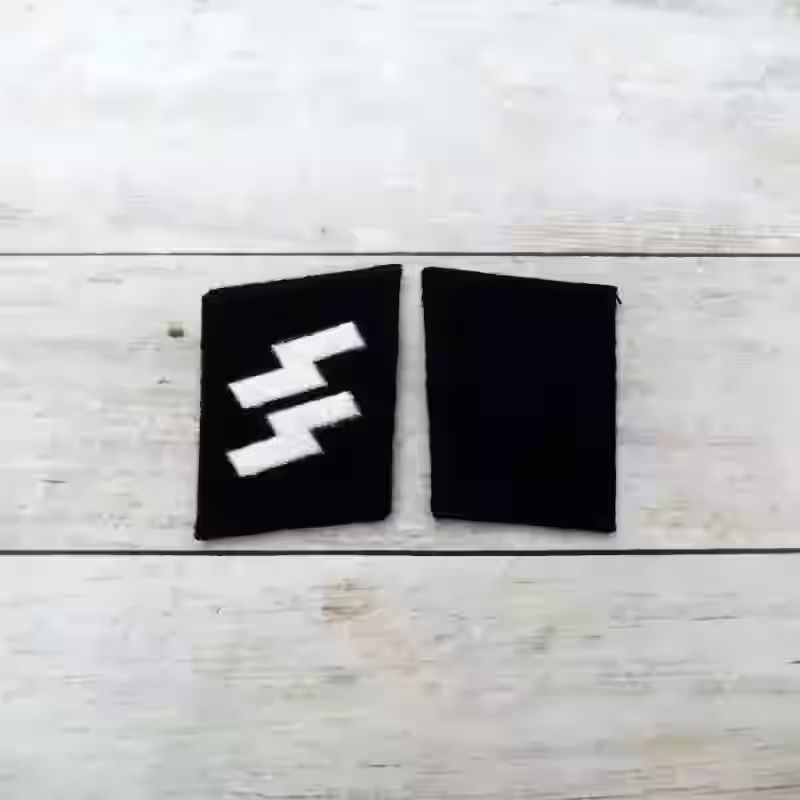
Waffen-SS Enlisted Men's Cap Skull
3.50 €
Uncover a distinctive piece of World War II history with this Waffen-SS enlisted woven cap skull, a meticulously crafted WWII German military collectible. Designed for the M40, M43, and M44 field caps, this insignia, associated with the elite 3rd SS Panzer Division “Totenkopf,” embodies the complex and sobering legacy of the Waffen-SS. Below, we explore its historical significance, material composition, and enduring value for collectors and historians.
Historical Background
The Waffen-SS enlisted men’s cap skull was worn by non-commissioned personnel of the Waffen-SS, the military branch of Nazi Germany’s Schutzstaffel (SS), from 1939 to 1945. Specifically, it adorned the uniforms of enlisted ranks, such as Schütze (Private) to Hauptscharführer (Master Sergeant), within the 3rd SS Panzer Division “Totenkopf”. Formed in October 1939 from the SS-Totenkopfverbände (SS-TV), the division, commonly known as “Totenkopf” or “Death’s Head,” was initially composed of concentration camp guards before evolving into a formidable combat unit. It saw extensive action in campaigns across Poland, France, the Soviet Union, and Hungary, earning a reputation for ferocity and ideological zeal.
The Totenkopf skull and crossbones, a symbol rooted in European military tradition, was historically used to signify defiance and mortality. The Waffen-SS adopted this emblem to reflect their elite status and unwavering loyalty to the Third Reich. Unlike the officer’s version, which often featured metallic or aluminum thread, the enlisted men’s skull was produced using simpler materials, yet remained equally symbolic—marking the wearer as part of a highly disciplined and feared formation. The insignia’s design underscored the division’s role in both military operations and the broader ideological framework of the Nazi regime, making it a significant artifact of Third Reich memorabilia.
Material & Condition
This Waffen-SS insignia is crafted from mouse-grey rayon thread, woven onto a black wool or felt backing. Measuring approximately 3.5 cm wide by 2.5 cm tall, the skull’s muted grey tone contrasts sharply with the dark background, ensuring visibility on the M40, M43, or M44 field caps. Early war examples (1939–1942) were typically hand-stitched, showcasing the high craftsmanship of German textile workshops. As wartime pressures mounted, later versions (1943–1945) adopted machine embroidery to accelerate production. Though less ornate than officer-grade versions, the enlisted skull’s finely woven details remain clear and striking.
Authentic pieces often show signs of age and wear, including frayed edges, minor discoloration, or natural fading of the black background. These features, along with subtle inconsistencies in stitching or skull shape, help distinguish original wartime examples from modern reproductions. Reproduction pieces may use synthetic fibers or exhibit overly uniform patterns. Genuine historical German artifacts are typically imperfect but richly detailed, reflecting the era’s production realities.
Collector’s Insight
The Waffen-SS enlisted men’s cap skull remains a highly sought-after WWII German military collectible due to its rarity, craftsmanship, and close ties to the 3rd SS Panzer Division “Totenkopf.” Its presence on the battlefield and association with one of the most infamous Waffen-SS units lend this piece a weighty historical significance. While the materials may be modest compared to officer versions, the quality of weaving and design precision make it a notable example of enlisted uniform insignia.
This artifact appeals to a wide range of collectors, from WWII militaria specialists and reenactors to curators and educators. Given the sensitive nature of Waffen-SS items, responsible handling is strongly encouraged—whether for display, research, or museum exhibition. For preservation, store the insignia in a climate-controlled environment using archival-safe materials to guard against moisture and UV damage. Presenting this Waffen-SS insignia in a museum-quality shadow box alongside historical documentation can enhance its educational value and promote a deeper understanding of the era it represents.
Historical reproductions only. Janoor Militaria does not endorse the ideologies of Nazi Germany or any extremist groups.
